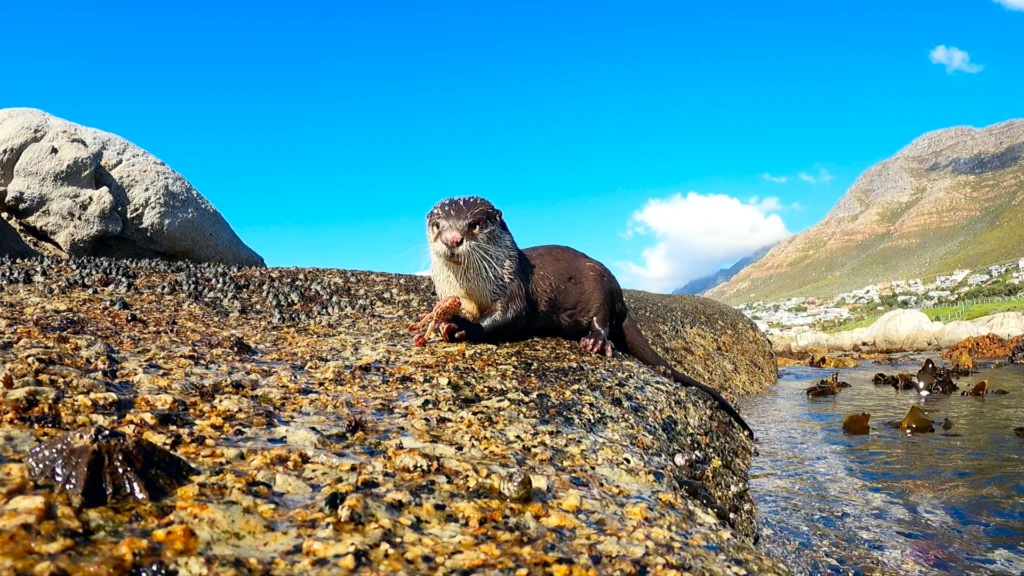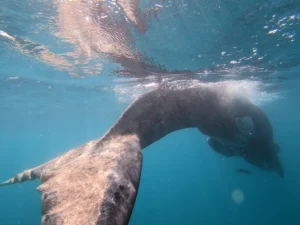Cape Town Freediving Clip Of The Week 11:
Stephan and Martin took a group of snorkelers to Windmill Beach. Windmill Beach is without a doubt the best Cape Town snorkeling spot. On this particular day, the water was 16 degrees, flat and the visibility was pretty good. The snorkelers had already been treated to sightings of octopus and shysharks when an inquisitive Cape clawless otter appeared. Three of the snorkelers then had the pleasure of being this little critter’s surf boards. He playfully climbed onto them and then jumped off to find the next snorkeler to ride. Stephan followed him, watched him catch a crab and then devour it on a rock only to then disappear between the kelp and rocks.
The Cape clawless otter (Aonyx capensis) aka the African clawless otter is the second largest freshwater otter species. Even though they are freshwater otters they also scavenge and hunt along the seashore and in calm, shallow inshore waters. They live near permanent bodies of fresh water like rivers, dams and lakes usually where there is sufficient foliage to provide shelter. They can be found throughout Africa, but are particularly prevalent in Southern Africa. Fresh water is essential for these otters not only for drinking, but also to rinse off their fur after swimming in the ocean. Unlike other marine mammals, otters do not have a subcutaneous layer of fat to keep them warm. They rely on their fur for thermoregulation and therefore must keep it clean.

Cape clawless otters have thick, smooth chestnut-coloured fur with white facial markings that extend down the neck to the chest. Their paws are partially webbed with five fingers. Most of their claws, except for 3 on each back foot, lack claws thus the name ‘clawless otter’. They have large flat molar teeth which they use to crush their prey like the crab in the photos. They also feed on fish, crayfish, lizards, birds and bird eggs. They average about 12 to 21kgs in weight and can reach 1.5m in length (their tails making up a third of this). Only sea otters and giant otters are bigger. They are not timid creatures and can defend themselves against dogs. Definitely do not try to initiate an interaction with these creatures. Rather let them initiate it with you because if they feel threatened you could get badly bitten.

These otters are found at a density of about one otter for every two kilometres of coast. They are highly adaptable and can survive in close proximity to humans. They are active during the day (diurnal), but are particularly active at dawn and dusk. This particular otter lives in the Murdock Valley area and has been sighted several times. It seems to be very comfortable around swimmers, snorkelers and freedivers.



